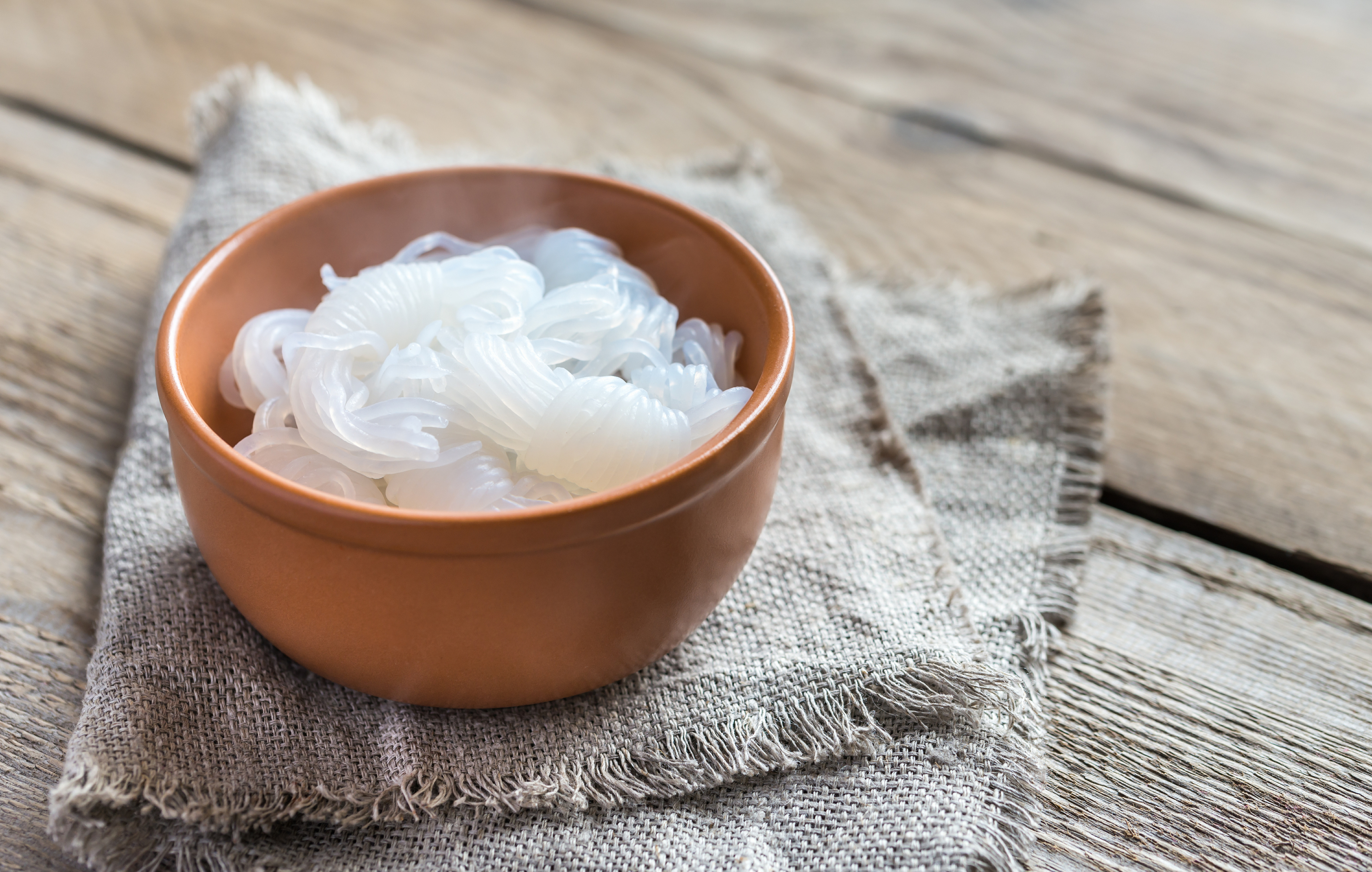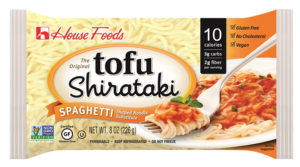You asked, we listened. Follower question of the week.

Shirataki noodles, a beginners guide.
Q: I’ve heard you mention *miracle noodles*, zero-calorie pastas, and the words ‘shirataki,’ and ‘glucomannan’—umm, gluco-what!?
A: Shirataki are noodle and rice products that have virtually no calories or carbs, are gluten free, and fat free, and oh yeah, are seriously satisfying too. Because of this, shirataki products are great for diabetics, for those with any sort of gluten sensitivity, and of course, for those of us who choose brains AND body—aka F-Factor fans.
What sort of magic is at play to create such a thing as calorie-and-carb-free pastas, you ask? Once again, it all comes down to fiber. Traditionally a Japanese food, these products are made from a variety of yam called konjac (or konnyaku), which contains a indigestible fiber called glucomannan. Glucomannan is extracted from the konjac yam, formed into a clear, jelly-like block, and then is cut or shredded into different “noodle” and “rice” shapes, packaged up, and then delivered to your supermarket shelves. Can you say, ‘thank you, konjac!?”
And they actually work?
Yes, and this research isn’t anything so new either! A 1984 study, published in the International Journal of Obesity, showed that glucomannan supplementation in obese patients resulted in significant weight loss. And a 2017 review of research on dietary fiber, published in Food Hydrocolloids, found that glucomannan was one of the only sources of fiber with reproducible, measurable effects such as weight loss. How ’bout them apples, or should we say yams!?
So what are we working with?
Enough with the science and onto the talk of miraculous, carbl-less carbs! There are a handful of types, brands and shapes of shirataki products available today, each of which offers its own benefits. While the products can, for the most part, be used in recipes interchangeably, it’s ultimately a matter of personal preference, as texture and shape can vary. We attempt to break it down for you here:

Tofu shirataki: known to be slightly chewier than traditional shirataki, which is known to have more of a snap to it.House Foods makes a spaghetti, fettuccini, angel hair and macaroni shaped tofu shirataki.
Better Than Foods: With oat fiber added to the konjac flour, the Better Than Foods shirataki products do contain calories (15 per serving), but have the added bonus of fiber too (4 grams!). The net carb remains zero as there are 4 grams of carbs total, and they’re known to have a more similar appearance and texture to traditional pasta, noodle and rice products. More about Better Than Foods here.
Flavored noodles: Where the traditional shirataki noodles are flavorless and calorie-less, flavored versions add slight amounts of calories and carbs. Miracle Noodles makes a Spinach Angel Hair, and a Garlic & Herb Fettuccini, Skinny Noodles has a ramen-style shirataki noodle and a spinach fettuccini,
Rices: Better Than Foods, Miracle Noodles and Skinny Noodles make a rice product. The Better Than Rice yields a more rice-like shape than the Miracle Rice and Skinny Shirataki Rice, which both have more of a risotto shape. Better Than Rice is Miracle Rice is calorie-and-carb-free.
Let’s get cooking:
Instructions for using shirataki products
- Open bag and place in strainer (don’t worry: the strange scent that they emit being opened is normal).
- Rinse with warm water for a few minutes.
- Place wet noodles in the bowl and cover with paper towel to soak up excess water.
- Microwave the covered noodles for approximately 5 minutes to help the water evaporate.
- The noodles are pre-cooked so that when you take them out of the microwave, they’re ready to be served—or used in a recipe.
#FFACTORAPPROVED shirataki recipes
For an extensive list of our shirataki recipes, click here, and for Tanya’s Top Shirataki Recipes, click here.